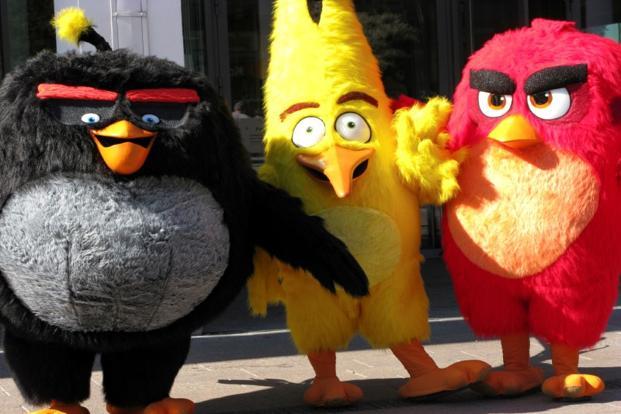

The Olympics are synonymous with extravagant opening ceremonies that usually culminate with the lighting of the Olympic flame. But the ongoing Winter Olympics (which ends on 25 February) in PyeongChang, South Korea, featured an extraordinary visual feat.
For a few minutes, the cold and windy night sky of PyeongChang was dotted with 1,218 drones as they created history with the first-ever drone light show at the Winter Olympics. And by pulling off this technological marvel, the show also set a Guinness World Record for the “most unmanned aerial vehicles airborne simultaneously.”
The hero of this act was the Shooting Star drone (all 1,218 of them) that was being controlled and managed by members of the drone light show team from Intel. But what went into creating this record?

The machine
The Shooting Star drone is tailor-made for these purposes. According to its official website, these drones are made of foam and flexible plastics and designed for light shows. At 330 grams, each weighs a little more than a volleyball.
“The Intel Shooting Star drone features built-in LED lights that can create volumetric 3D images and animations in the sky with over 4 billion colour combinations based on RGBW (red, green, blue and white) LED, synchronized to music and lighting effects… The drones can be used for entertainment, art, branding in the sky, marketing, events, and more,” says Natalie Cheung, general manager, drone light shows, Intel Drone Group, in an emailed response.
The drone’s lightweight structure and limitless colour combinations make it perfect for creating entertainment experiences.

The record
The drone’s ability to create over 4 billion colour combinations was the prime reason every animation created by the fleet, including a snowboarder and the eight Olympic rings, looked much like a constellation in motion. All 1,218 drones were controlled by a single computer and one drone pilot.
Creating the animations was by no means an easy task. The team used Intel’s proprietary algorithms to automate the animation creation process by image, quickly calculating the number of drones needed and where they should be placed in the sky.
There was some initial confusion around when the record was actually set. Cheung says the Guinness World Record setting flight was achieved in December 2017 during the rehearsal and pre-recording for the opening ceremony of the 2018 Winter Olympics. This pre-recording was then broadcast at the opening ceremony on 9 February. The light show at PyeongChang, Cheung says, was different, for a number of reasons. “One, it’s the biggest international stage our drone fleet has performed at and second, we were trying to push the boundaries with over 1,000 drones flying simultaneously in a record-setting effort. In addition, we had to accommodate for unpredictable weather conditions such as high winds and chilling temperatures in PyeongChang, which posed additional challenges,” she explains.
Since Intel’s drones had never flown in such cold temperatures, their teams in Finland and Germany even put the drones to test in places such as the Alps.
The future
The company also unveiled the Shooting Star Mini Drone at CES 2018 in Las Vegas, Nevada. With a lightweight structure and propeller guards, this drone has been designed specifically for indoor light shows. Cheung says the team “would love the opportunity to do a light show in India but have not disclosed any plans yet.”
Apart from providing light shows as a service, the technology used in the drone light show at PyeongChang can be applied in other areas as well. “The fleet management technology we are developing and testing through drone light shows will be fundamental for drone inspections as well as search and rescue operations… We are so excited to see where this amazing technology will take us next,” Cheung adds.
Some of the other drones from Intel (the Falcon 8+ and Intel Sirius Pro) are used for inspecting different commercial assets — from power lines and oil rigs to crops. While these inspections are performed using a single drone that flies multiple missions, the fleet management technology could be used to deploy multiple drones per mission. This would reduce the inspection time significantly, and prove valuable in search and rescue missions.
[“Source-livemint”]




